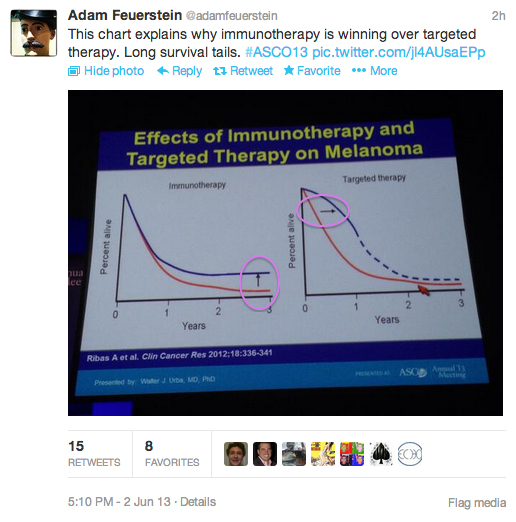PV-10 works better, faster and longer.
It appears there's a lot of excitement coming out of ASCO 2013 regarding immunotherapies, such as PD-1 agents from Bristol-Myers and Merck, to name just a few.
In trying to synthesize key points, for me, of the tidal wave of comments -- Tweets, blogs, Instagram pics, e-mail, etc. -- I think an important realization emanates from an Adam Feuerstein tweet below about "why immunotherapy is winning over targeted therapy: Long survival tails."
The above figure is taken from this paper: New challenges in endpoints for drug development in advanced melanoma by Ribas et al. (2012).
Note two things, circled in pink by me.
First, the longer survival tail of immunotherapies, demonstrated by the presenter's black arrow (bottom up) showing the difference between the blue and red lines. Immunotherapies demonstrate a meaningful or material survival difference over a longer time period.
Second, the dramatic initial results of targeted therapies, demonstrated by the presenter's black arrow (rightward) showing the difference between the blue and red lines. Targeted therapies demonstrate a meaningful or material survival difference out of the gate, but the differential dissaptes over a longer time period.
This Feuerstein tweet thread, as one would expect, evolves into the following:
Combination therapies.
PV-10 is, itself, a combination therapy: it's both a targeted therapy and an immunotherapy in one.
PV-10 works better, faster and longer.
I think management wants to convey PV-10 produces dramatic initial results, like a targeted therapy, with a meaningful survival difference over a longer time period, like an immunotherapy.
PV-10 works better, faster and longer.



No comments:
Post a Comment